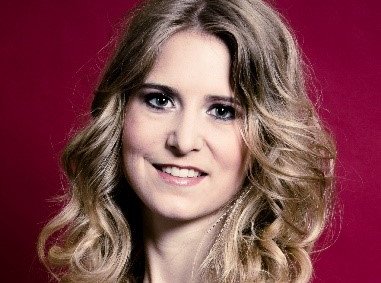Best female PhD students 2018 - Aimee Sakes
Next Friday we celebrate the International Women’s Day. In the lead up to #IWD2019, we'll be posting profiles of our 2018 Cum Laude female PhD candidates on our Twitter account. The best female PhD student at TU Delft for 2018 will be awarded at our annual DEWIS symposium on 4 March. With this award, DEWIS rewards the quality of the PhDs dissertation and places her extraordinary achievement in the spotlights. #IWD2019 #BalanceforBetter.

Hi, my name is Aimée Sakes and I did my PhD at the faculty of Mechanical, Maritime and Materials Engineering at the Department of BioMechanical Engineering. I have a Bachelor’s degree in Mechanical Engineering and a Master’s degree is in Biomedical Engineering.
What was your PhD research about? Why is this important?
‘My Research focused on the development of new catheters for the treatment of Heart Disease. Heart Disease is currently the number one cause of death worldwide, with over 7.4 Million deaths annually. In an effort to bring this number down, we developed new types of catheters that can be used to treat heart disease. The main cause of heart disease is plaque build-up in the coronary arteries of the heart, which deprives the heart of oxygen and nutrients it needs to function. Our developed catheters allow for puncturing and reopening of the most calcified plaque build-ups in the coronary arteries. By enabling reopening of the coronary arteries using our devices, an invasive open-heart surgery can be prevented. For inspiration on how to design these catheters, we looked into nature, and found very innovative and inspiring mechanisms in the chameleon tongue and mantis shrimp, which we incorporated in our designs.’
What did you find attractive about your research?
‘The most attractive aspect about my research is knowing people can be saved. The transition of biology into mechanical mechanisms and applying these mechanisms for the betterment of health care is a huge appeal. My work deals with many aspects of mechanical engineering and allows me to think up of out-of-the-box solutions for healthcare problems. I find inspiration in many things and I love to explore near experiences and places. The most rewarding part of my research is seeing that out-of-the-box idea getting picked up by industry, where it hopefully in the near future will make a real difference in patient’s lives.’
What were the obstacles and difficulties? How did you tackle them?
‘Reaching the coronary arteries in the heart using the vasculature system puts a lot of constraints on your device. The device should have a small diameter to be able to fit inside the lumen of the arteries, should be long and slender to reach the heart from the incision point in the groin or wrist, and flexible in order to navigate through all the curves and bends of the vasculature system. On the other hand, we need rigidity in order to puncture the plaque in the coronary artery, which clashes with the requirement for a miniature, slender, and flexible device. In an effort to solve this challenge, we looked into nature. Specifically, we looked into how animals navigate through narrow environments, penetrate hard substrates, and prevent buckling of their appendages, for example. Based on this research, we were able to develop a catheter that is flexible, but also “strong”, being able to exert high forces when needed.’
What was your next step? What are you doing now?"
‘I am currently continuing to work on the commercialisation of one of the catheters developed during my PhD together with Asahi Intecc Japan. In this catheter, we use a hydraulic pressure wave to puncture occlusions in the heart. Next to this project, I am currently also working on the development of a new instrument set that would allow for early breast cancer detection. As of now, current diagnostic screening tools for breast cancer can only detect tissue masses of approximately 1 mm in diameter, which means that it has been growing for approximately 8 years before detection! A new technique called ductoscopy could potentially diagnose breast cancer in its beginning stages by inspecting the milk ducts in the breast. We are currently working together with the UMC Utrecht to develop this technique further to allow for breast cancer detection at its beginning stages! After these projects finish, I will continue to work on the development of bio-inspired soft medical instruments as a Tenure Tracker in the 4TU confederation. My hopes are to continue developing medical instruments that will benefit society as whole and patients on a day to day basis.’
Read all the interviews with all female Cum Laude PhD students of 2017-2018 here.